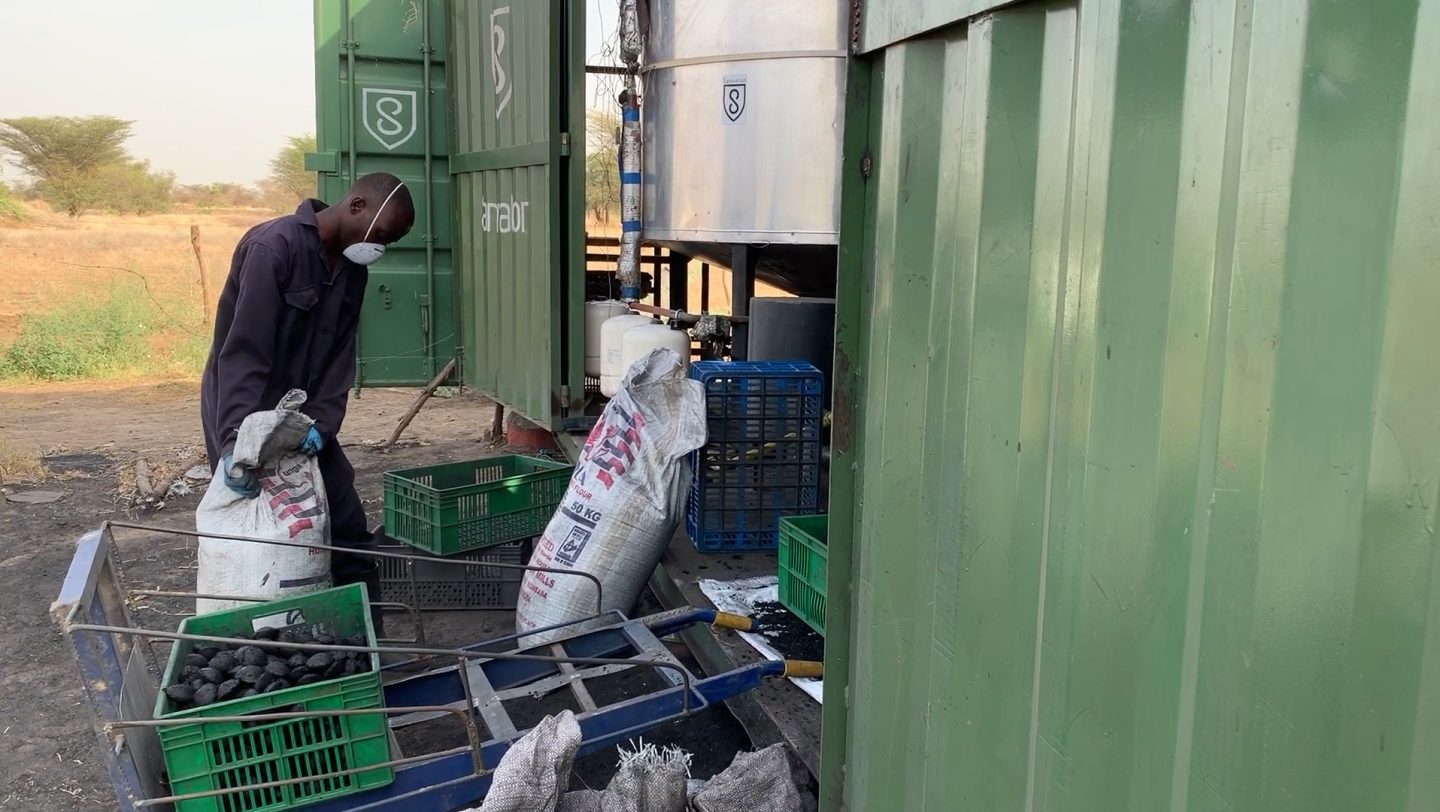Alternative cooking energy: Superball briquettes changing lives in Kakuma
Access to affordable and sustainable energy remains an ongoing challenge for refugees in Kakuma and Kalobeyei.
Ivere from South Sudan serves a meal of fish and 'ugali' prepared using energy from superball briquettes. ©UNHCR/Samuel Otieno
29-year old Lucy Ivere, from South Sudan, has found an innovative energy product that allows her cook meals faster and less costly. She prepares a delicious meal of smoked fish and ugali – pap made from a mixture of corn flour and sorghum, for her family of six. The meal, she says, will be ready in 30 minutes, just in time for her children arriving home from school.
“Briquette costs the same price as charcoal but it’s more economical as it burns longer and produces more heat,” says Ivere.
These briquettes cook faster, produce a lot of heat and burn for up to three hours
Lucy is among hundreds of families in Kakuma using briquettes – made from human waste and charcoal dust, as a source of cooking energy. ‘Poop,’ a smart and readily available ingredient, is collected from modified latrines in Kakuma camp. The sludge is then treated, combined with charcoal dust and compressed to make balls of energy.
“It’s very different from normal charcoal. These briquettes cook faster, produce a lot of heat and burn for up to three hours,” says Lucy.
A kilo of briquette costs 20 Kenya Shillings (0.2 USD) and a kilo of charcoal costs nearly the same amount, but the benefits of using the briquettes outweighs that of ordinary charcoal and firewood – the main source of energy for refugees and the host community.
These briquettes also help in saving the environment. “For every tone of briquettes produced, we save 88 trees.” Syrus Mutua, Programme Coordinator at Sanivation Company explains.
“We combine two waste products, which is charcoal dust and human waste to make a useful product, Syrus adds.
Imani Daudi, a refugee from Congo, is among a group of refugees that collect sludge from modified household latrines and transports it to the processing center located near the refugee camp. Modified latrines are hygienic and are emptied and cleaned once a week.
“We come to work very early in the morning and collect sludge from the community. We work for five days a week,” Imani Daudi remarks.
These briquettes also help in saving the environment. For every tone of briquettes produced, we save 88 trees
Ivere is among the nearly 500 refugee families in Kakuma camp who are using modified latrines from Sanivation.
Ivere says. “Normal latrines fill-up fast and when that happens, you need to get a new one. This takes time and also depends on the amount of space left in your compound. But this latrine (modified) can never fill-up.”
Latrine coverage in Kakuma camp and Kalobeyei settlement stands at only 31.9%. This means that the available latrines are insufficient. Emptying the modified latrines weekly helps to improve sanitation and provide cleaner fuel for refugees and the host community.
Natalie Ndunda, Snr. Environment Associate at UNHCR says. “Given that the current cooking energy practices in Kakuma are unsafe and inadequate, the briquettes being produced by Sanivation contribute towards ensuring that refugees are able to satisfy their energy needs for food preparation in a safe and sustainable manner, without fear or risk to their health and well-being.”
With a clean, sustainable fuel, or fuel-efficient technologies, refugees can cook meals and avert the malnutrition and ill-health that may occur when using open fires.
UNHCR remains committed to addressing the energy needs of over 180,000 refugees in Kakuma and Kalobeyei and protecting the environment.



